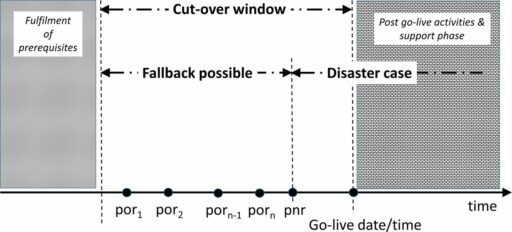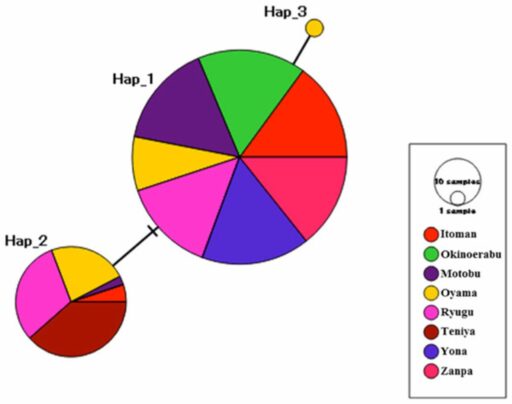Table of Contents
Data augmentation is a transformative technique in machine learning that involves generating new training samples from existing data to enhance model performance and generalization capabilities. This process is critical in addressing challenges such as data scarcity, lack of diversity, and overfitting. Through a variety of methods, including image transformation and text manipulation, data augmentation has become a cornerstone in improving the robustness and accuracy of models, particularly in fields like computer vision and natural language processing (NLP).
Key Takeaways
- Data augmentation significantly improves model performance by increasing the diversity and amount of training data, leading to better generalization on unknown data.
- It is crucial for combating overfitting, ensuring that machine learning models are trained on a sufficiently varied dataset to enhance their predictive capabilities.
- Advanced techniques such as Dynamic Mosaic and Multi-Type Data Augmentation (MTDA) have shown to effectively boost recognition accuracy in image recognition models.
- While beneficial, data augmentation presents challenges such as the risk of misrepresenting original data and introducing non-grammatical or irrelevant variations.
- The application of data augmentation in specialized domains like medical imaging has proven to enhance model robustness, accuracy, and interoperability.
Fundamentals of Data Augmentation


Defining Data Augmentation in Machine Learning
Data augmentation is a pivotal technique in machine learning that involves generating new training samples from existing data. It aims to improve model performance and generalization by artificially expanding the dataset. This is achieved through various methods such as image rotation, cropping, flipping, and adding noise to audio signals.
The primary benefits of data augmentation include enhanced model robustness and a reduction in overfitting. This is particularly crucial in domains where data is scarce or lacks diversity, such as computer vision and natural language processing (NLP). By providing a model with a more diverse set of training examples, data augmentation helps to simulate a wider array of real-world scenarios that the model may encounter.
Data augmentation strategies are essential for dealing with the challenges of limited data and ensuring that machine learning models are not only accurate but also resilient to variations in input data.
While data augmentation can significantly boost model performance, it is not without its challenges. Careful consideration is required to avoid misrepresenting the original data and to evaluate the effectiveness of the augmented data in training models.
The Role of Data Augmentation in Model Performance
Data augmentation plays a pivotal role in enhancing machine learning models by providing a more comprehensive dataset for training. By increasing the volume and variety of training data, models can achieve improved robustness and accuracy, particularly when dealing with unknown data. This is crucial in fields like computer vision and natural language processing (NLP), where data scarcity and lack of diversity can severely limit model performance.
The benefits of data augmentation are not just theoretical; they are evident in the increased performance for unknown data and in the reduction of overfitting. Techniques such as image rotation, cropping, flipping, and adding noise to audio signals are straightforward yet effective ways to enrich the training dataset. Here’s a brief overview of how data augmentation impacts model performance:
- Enhances generalization: Models trained on augmented data can better handle new, unseen data.
- Reduces overfitting: More diverse training examples prevent the model from memorizing the data.
- Addresses data scarcity: Augmentation techniques can compensate for limited data resources.
- Improves model robustness: Variability in training data leads to stronger, more adaptable models.
While data augmentation is a powerful tool, it is not without its challenges. The design and implementation of augmentation strategies require domain-specific knowledge to ensure that the integrity of the original data is maintained. Misrepresentation of data through inappropriate augmentation can lead to models that perform poorly on real-world tasks.
It is essential to evaluate the effectiveness of data augmentation techniques carefully, considering the potential risks and limitations. This evaluation is a crucial step in the design of analytics tools that can drive meaningful business change.
Common Techniques and Their Applications
Data augmentation is a cornerstone of machine learning, particularly in domains where data is scarce or imbalanced. It enhances the diversity and quantity of training data, which can lead to more robust models. Here are some of the top techniques used in computer vision and their typical applications:
- Adding noise: Introduces variability and helps models generalize better.
- Cropping: Focuses on different parts of the image to learn from various perspectives.
- Flipping: Augments the dataset with mirrored versions to simulate different orientations.
- Rotation: Helps the model to recognize objects at various angles.
- Scaling: Ensures the model is not sensitive to the size of the input.
- Translation: Teaches the model to understand objects in different positions.
- Adjusting brightness and contrast: Improves the model’s ability to operate under varying lighting conditions.
These techniques are not just limited to computer vision; they can be adapted for other domains like natural language processing, where methods like synonym replacement and sentence shuffling are used to augment text data.
Each technique must be carefully applied to avoid misrepresenting the original data, which could lead to a model learning incorrect patterns. The choice of technique often depends on the specific problem at hand and the nature of the data.
Data Augmentation in Practice


Case Studies: Success Stories in Computer Vision and NLP
Data augmentation has been pivotal in advancing the fields of computer vision and natural language processing (NLP). In computer vision, techniques such as image rotation, flipping, and scaling have significantly improved the performance of convolutional neural networks (CNNs) on tasks like object recognition and image classification. Similarly, in NLP, synonym replacement and back-translation have enhanced the understanding of context and nuances in text data.
The success stories are numerous, but a few stand out for their impact on the industry:
- Google’s BERT leveraged data augmentation to understand the intent behind search queries better, revolutionizing search engine optimization (SEO).
- Facebook’s DeepFace utilized massive datasets with augmented images to achieve near-human accuracy in facial recognition.
- OpenAI’s GPT-3 demonstrated how synthetic text generation could create diverse and extensive training datasets, pushing the boundaries of generative models.
The strategic application of data augmentation can lead to breakthroughs in AI that were previously unattainable due to data limitations.
While these examples highlight the transformative power of data augmentation, it is essential to recognize the nuanced approach required to apply these techniques effectively. The balance between enhancing datasets and preserving the integrity of the original data is a delicate one, and the successes mentioned above are a testament to the meticulous planning and execution involved in these projects.
Advanced Techniques: Dynamic Mosaic and MTDA
The advent of advanced data augmentation techniques has marked a significant milestone in the field of machine learning. Among these, the Dynamic Mosaic algorithm and Multi-Type Data Augmentation (MTDA) strategy stand out for their ability to enhance model performance. Dynamic Mosaic, for instance, combines multiple images into a single training instance, thereby providing a richer context for object detection tasks.
MTDA, on the other hand, introduces a variety of transformations to the data, which can include color and contrast adjustments, noise injection, and even meta-learning-based techniques. This diversity in augmentation approaches ensures that models are not only more accurate but also robust against a wider range of input variations.
The integration of these sophisticated techniques can further improve the recognition accuracy of image recognition models, making them invaluable tools in the machine learning practitioner’s arsenal.
While the benefits are clear, it is crucial to select the appropriate augmentation strategy based on the specific image type and network architecture. The table below summarizes some of the common augmentation techniques and their applications:
| Technique | Application | Example |
|---|---|---|
| Color Adjustment | Enhance image features | Adjusting brightness, contrast |
| Noise Injection | Robustness to variations | Adding Gaussian noise |
| Meta-learning | Generalization | Using generative models |
In summary, the strategic application of Dynamic Mosaic and MTDA can lead to significant improvements in model accuracy and robustness, making them essential components of a data scientist’s toolkit.
Practical Tips for Implementing Data Augmentation
When integrating data augmentation into your machine learning workflow, it’s essential to start with a clear understanding of your dataset and the specific challenges it presents. Begin by identifying the types of augmentations that are most relevant to your data. For instance, spatial transformations like rotating and cropping may be beneficial for image data, while synonym replacement could be more appropriate for text.
Here are some practical steps to consider:
- Evaluate your dataset’s limitations, such as size or imbalance, and tailor your augmentation strategies accordingly.
- Start with simple techniques and gradually introduce more complex methods as needed.
- Monitor the model’s performance after each augmentation to ensure it’s contributing positively.
- Use automation tools to streamline the augmentation process, but keep a check on the quality of the generated data.
Remember, the goal of data augmentation is not just to expand the dataset but to enhance the model’s ability to generalize from it. Over-augmenting can lead to a misrepresentation of the original data, which can be counterproductive.
Finally, it’s crucial to continuously evaluate the impact of data augmentation on your model. This involves not just looking at immediate performance gains but also considering the long-term robustness and adaptability of the model to new, unseen data.
Challenges and Limitations


Risks of Misrepresenting Original Data
Data augmentation is a powerful tool in machine learning, but it comes with the risk of misrepresenting the original data. Misrepresentation can lead to models that are biased or inaccurate, undermining the very purpose of using data augmentation to improve model performance. To mitigate these risks, it is essential to maintain a balance between augmenting data and preserving its integrity.
- Consistency: Uniformity in data format and preprocessing is crucial to avoid misrepresentation.
- Quality Metrics: Employ comprehensive quality metrics to ensure accuracy and completeness.
- Ethical Considerations: Ensure data is augmented ethically, without introducing biases.
Misrepresentation not only affects model accuracy but can also have real-world consequences, such as loss of customer trust or legal penalties.
It is also important to consider the context in which data augmentation is applied. For instance, in medical imaging, a slight alteration could lead to a misdiagnosis, while in natural language processing, it might result in non-sensical outputs. Therefore, the augmentation techniques must be chosen carefully, with a thorough understanding of the domain and the data.
Dealing with Non-Grammatical Augmented Data
When applying data augmentation techniques, one common issue is the introduction of non-grammatical sentences. These can arise from transformations such as word position changes or word removals, which may alter the original meaning or disrupt the standard language structure. This poses a significant challenge as machine learning models rely on high-quality data to learn effectively.
To address this, practitioners can take several steps:
- Validation: Implement checks to ensure that augmented data maintains grammatical integrity.
- Filtering: Use algorithms to filter out non-grammatical sentences before adding them to the training set.
- Correction: Apply natural language processing tools to correct grammar in the augmented data.
Careful consideration and evaluation are crucial when integrating augmented data into training models. The goal is to enhance model performance without compromising the data’s quality.
Despite these efforts, the limitations of data augmentation must be acknowledged. The risk of misrepresenting the original data and the potential impact on model understanding of non-standard language are concerns that require ongoing attention. Moreover, issues such as class imbalance and the availability of ground truth information can further complicate the use of augmented data in online learning environments.
Evaluating the Effectiveness of Augmented Data
To gauge the effectiveness of augmented data, it is essential to consider both qualitative and quantitative measures. The ultimate test is whether the augmented data leads to improved model performance without compromising the integrity of the original dataset.
One approach to evaluation involves comparing metrics such as accuracy, precision, and recall before and after data augmentation. This can be succinctly presented in a table:
| Metric | Pre-Augmentation | Post-Augmentation |
|---|---|---|
| Accuracy | 85% | 90% |
| Precision | 80% | 85% |
| Recall | 75% | 83% |
However, numbers alone do not tell the full story. It’s also important to assess the augmented data for any potential misrepresentation of the original data or introduction of non-standard language that could affect model generalization.
Careful consideration and evaluation are crucial when applying data augmentation techniques in machine learning to avoid pitfalls such as overfitting or misrepresentation.
Finally, the availability of ground truth information and the balance of classes must be taken into account to ensure that the augmented data contributes positively to the model’s learning process.
Data Augmentation in Specialized Domains


Medical Imaging: Techniques and Comparisons
In the realm of medical imaging, data augmentation stands as a pivotal technique for enhancing machine learning model accuracy. The diversity and volume of data are critical factors in developing robust algorithms capable of interpreting complex medical imagery. A variety of augmentation techniques are employed, each with its own merits and use cases.
- Spatial transformation-based methods manipulate the orientation and position of images.
- Color and contrast adjustments refine the visual details.
- Noise-based techniques introduce variability that models may encounter in real-world scenarios.
- Deformation-based methods simulate anatomical variations.
- Data mixing and filters generate synthetic yet plausible images.
The effectiveness of these techniques is not merely theoretical; empirical evidence underscores their value in improving diagnostic precision and model interoperability.
While a comprehensive catalogue of techniques exists, it is essential to tailor augmentation strategies to the specific requirements of medical imaging tasks. The selection of appropriate methods hinges on the desired outcome, whether it’s enhancing the detection of subtle pathologies or ensuring the model’s generalizability across diverse patient populations.
Overcoming Data Scarcity and Enhancing Diversity
In the realm of machine learning, data scarcity and lack of diversity are significant challenges that can impede the development of robust models. To address these issues, data augmentation plays a pivotal role. It not only supplements the dataset with additional synthetic or modified examples but also ensures that the model is exposed to a wide range of scenarios, enhancing its ability to generalize.
- Data Quality: Ensuring accuracy, completeness, and relevance of the dataset is essential. Addressing missing values, outliers, and noise helps the data to reflect real-world scenarios more accurately.
- Data Diversity: Introducing a variety of data points prevents models from becoming overly specialized and improves their performance in diverse environments.
- Data Quantity: While quality is paramount, having an adequate volume of data is crucial for the model to learn patterns and adapt to different situations.
By employing strategic data augmentation techniques, we can mitigate the risks associated with data scarcity and enhance the diversity of datasets, leading to more reliable and generalizable machine learning models.
Furthermore, adopting best practices such as utilizing cloud-based storage solutions and implementing efficient data pipelines (ETL) can facilitate the management of increased data volumes. This ensures scalability and the ability to handle diverse data types across different systems and applications.
Impact on Model Robustness and Interoperability
The impact of data augmentation on model robustness cannot be overstated. Robust models are essential for real-world applications, where they must handle a variety of input conditions. Data augmentation contributes to this robustness by introducing a range of scenarios during training, which prepares the model to perform reliably under different circumstances.
- Accuracy: Ensures precision and reduces biases.
- Consistency: Maintains uniformity in data, aiding in effective generalization.
- Data Diversity: Enhances adaptability to different conditions.
- Timeliness: Keeps the model updated in dynamic environments.
By focusing on these aspects, data augmentation not only improves the accuracy but also the interoperability of models, allowing them to function seamlessly across different systems and domains.
Interoperability is particularly crucial in specialized domains such as healthcare, where models must integrate with various systems and protocols. Data augmentation ensures that models are not only robust but also versatile, capable of understanding and processing data from multiple sources without compromising performance.
Conclusion
In summary, data augmentation stands as a pivotal technique in the realm of machine learning, offering a robust solution to the challenges of data scarcity and lack of diversity. By artificially expanding the training dataset through methods such as image transformations, noise addition, and advanced algorithms like Dynamic Mosaic and Multi-Type Data Augmentation, models can achieve enhanced performance and generalization for unseen data. While the benefits are substantial, including improved accuracy and reduced overfitting, it is crucial to acknowledge and address the limitations of data augmentation, such as the potential distortion of original data meanings and the introduction of non-standard language constructs. Nevertheless, when applied judiciously, data augmentation proves to be an invaluable asset in developing more accurate and resilient machine learning models across various domains, including computer vision and medical imaging.
Frequently Asked Questions
What is data augmentation in machine learning?
Data augmentation is a technique used to generate new datasets from existing ones by applying methods like image rotation, cropping, flipping, and adding noise to audio signals. Its main goal is to increase training data, enhancing model performance and generalization for unknown data.
Why is data augmentation vital for model performance?
Data augmentation is crucial because it helps reduce overfitting by diversifying the training data, which leads to better generalization and robustness of machine learning models, especially when dealing with limited or unbalanced datasets.
How does data augmentation benefit computer vision and NLP?
In computer vision and NLP, data augmentation increases the volume and variety of data, addressing issues like data scarcity and lack of diversity. This results in improved model accuracy and generalization capabilities.
What are some advanced data augmentation techniques?
Advanced techniques include the Dynamic Mosaic algorithm and Multi-Type Data Augmentation (MTDA), which have been shown to effectively improve the recognition accuracy of image recognition models.
What are the limitations of data augmentation?
Limitations include the risk of misrepresenting the original data, generating non-grammatical sentences, and the challenge of evaluating the effectiveness of augmented data in training models.
How is data augmentation applied in medical imaging?
Data augmentation in medical imaging employs techniques like spatial transformations, color and contrast adjustments, and noise-based methods to increase the dataset size and diversity, which is crucial for training robust and interoperable machine learning models.





